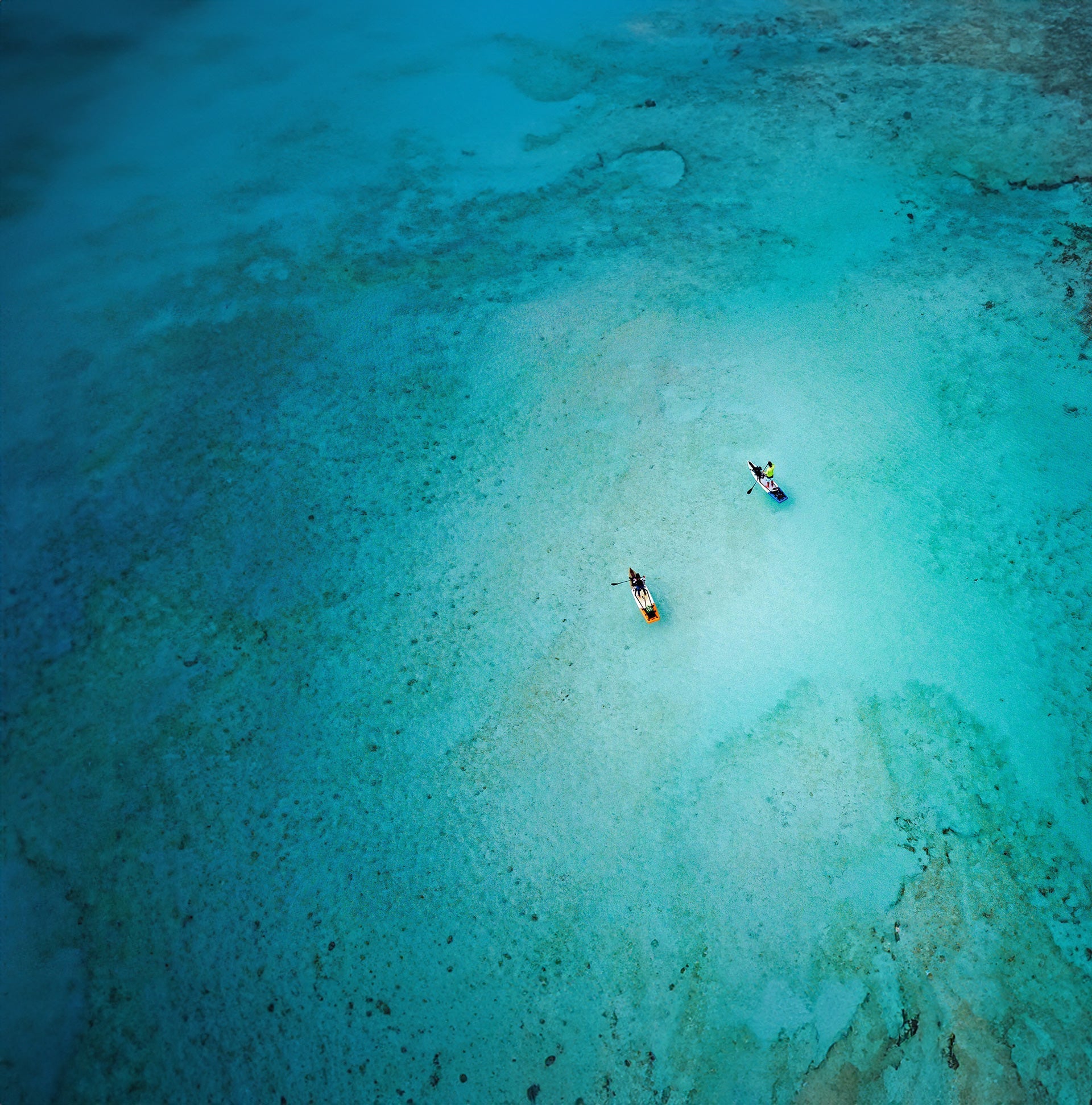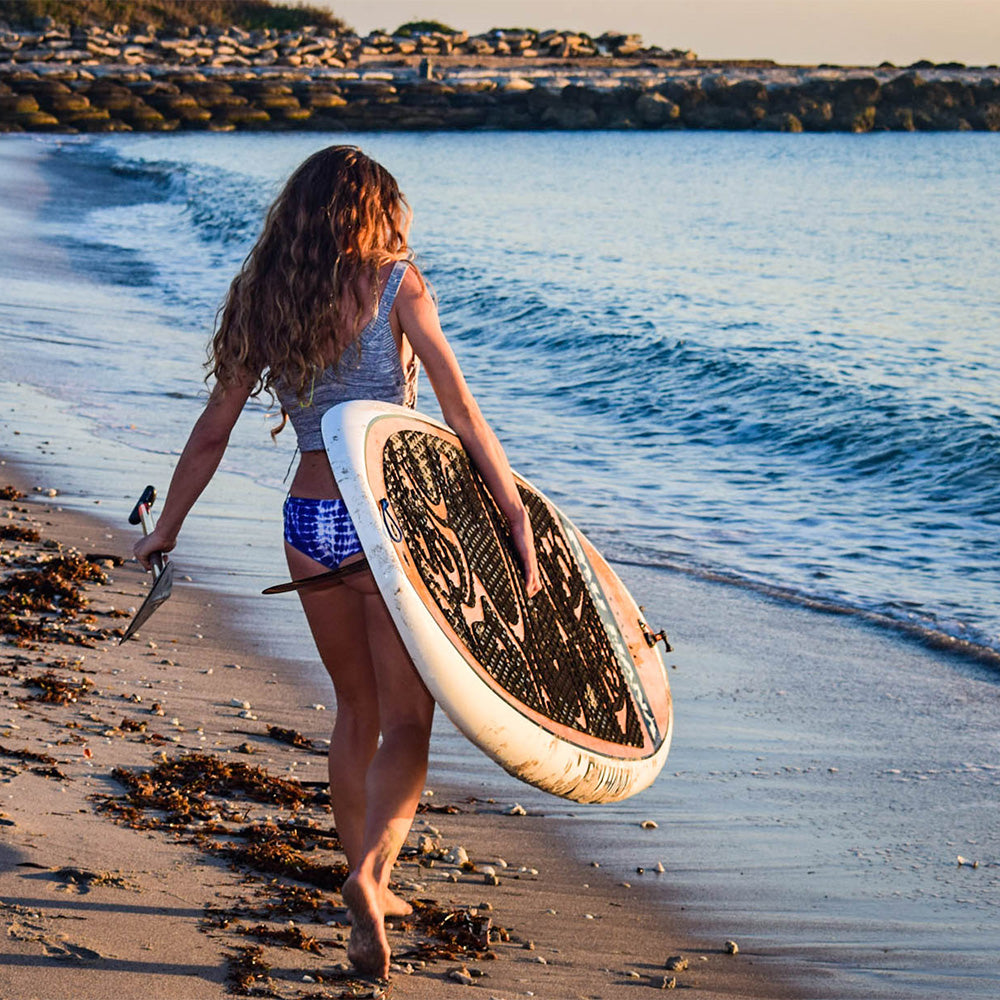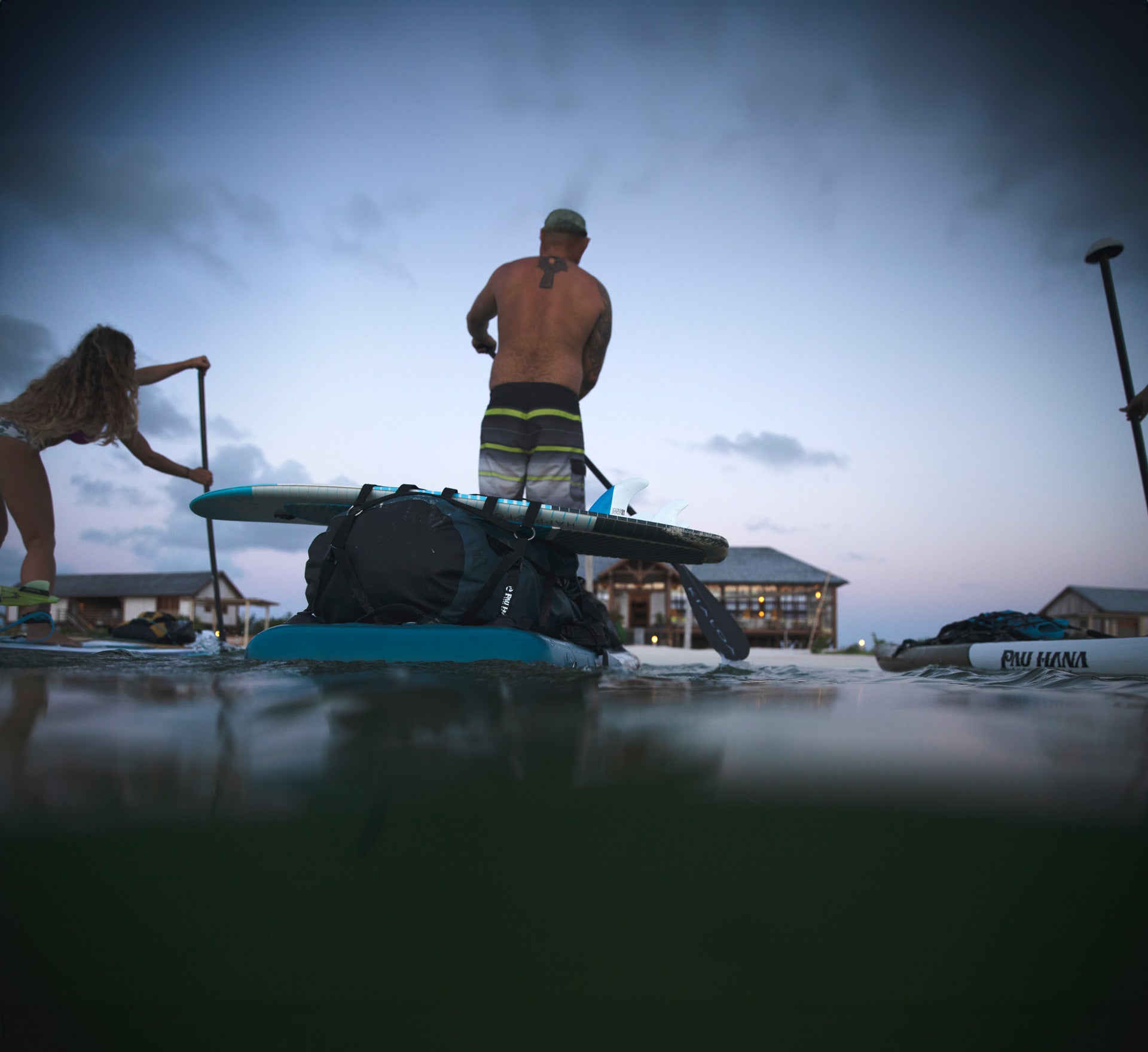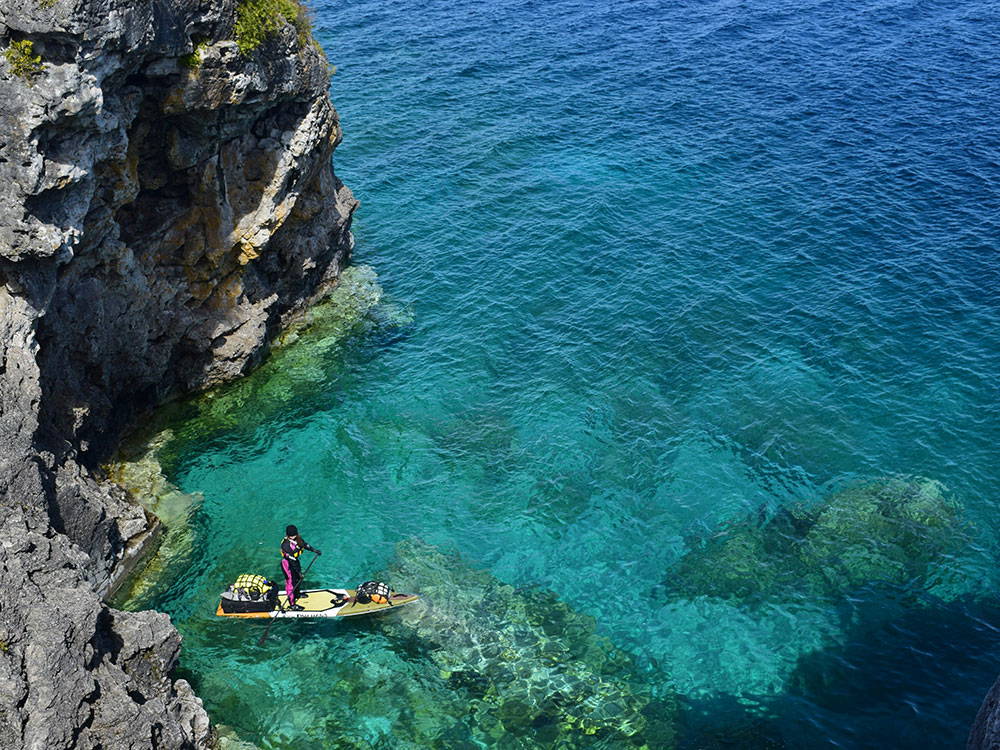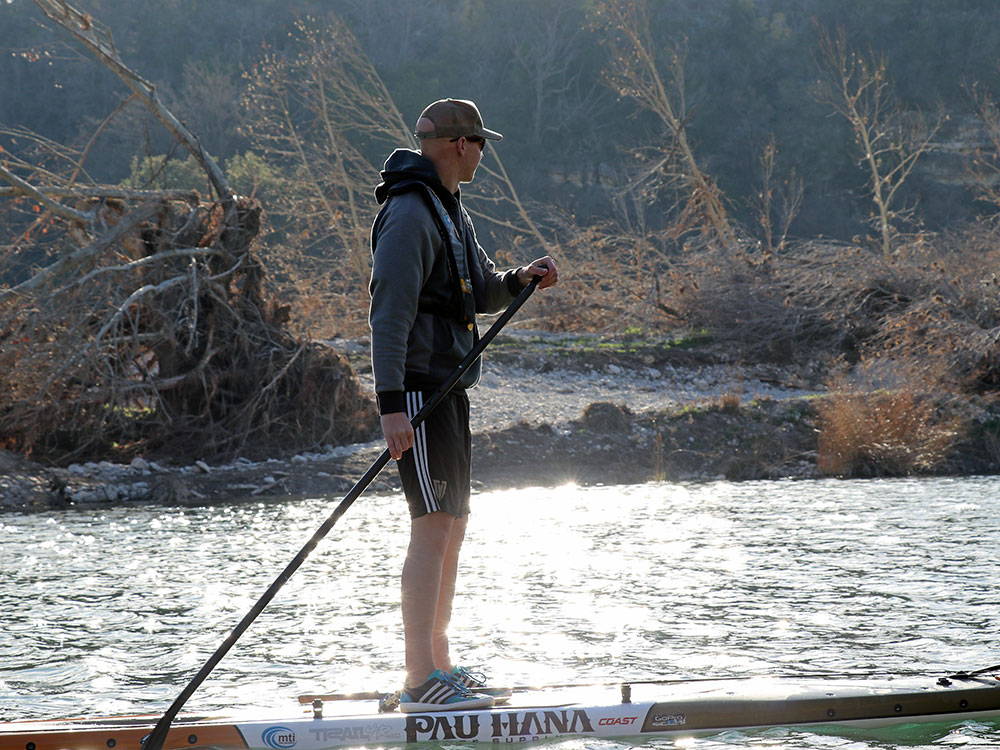CIRCUMNAVIGATION OF YELLOWSTONE LAKE
“You’re going to do what?”
Said the National Park Ranger in Yellowstone after I had just told him of my objective to circumnavigate Yellowstone Lake on a standup paddle board. Right when he said that with raised eyebrows, my peripheries caught the other two rangers attention enough for them to turn around, distracted by what they were doing, to see exactly what I was. Knowing almost instantly at that moment that the trip was to be special. They slapped me in front of a television screen for a safety video, inspected my board for any sort of invasive aquatic insects or parasites, and handed me my permit. Still with enough disbelief, the ranger sent me on my way and told me to, “Take a hike you crazy paddler!” and off I went.

I had to drive about ten miles to the other side of the lake for my start. Logically, it made more sense to start at Sedge bay versus the marina where I got my permit. Spread out over three days and two nights at backcountry wilderness sites, I planned between 20 and 30-mile days.


Leaving from Sedge Bay
my first campsite was 19.5 miles from the trailhead where the car was parked, down in the southeast arm of the lake. The lake itself has 110 miles of lakeshore. With three islands that soak up some of those miles. So in theory, Ill be paddling about 90-100 miles. All packed up and strapped in with the bugle of a distant elk as a literal starting gun for the paddle, I jumped on my board and began stroking Yellowstone Lake, the largest alpine lake in North America, and quickly learned, an inland sea.
Yellowstone Lake is the caldron of the sleeping giant Yellowstone super volcano. A high lake sitting at 7,732 feet, spooning the Continental Divide. Making it a special one for exploration, adventure, and most importantly, habitat.
Many species of the greater Yellowstone complex not only utilize, but call the park and lakeshore home. Aquatic birds, bald eagles, elk, moose, deer, otter, porcupine, grizzly and black bear, and wolves all need this lake to thrive. The food chain can almost be seen as the miles of shore began to be viewed in my aforementioned rear view mirror of my 12’0” inflatable SUP.
With conditions being the definition of perfection, the sheet glass and crystal clear waters offered excitement and joy I had yet to channel in quite some time. Just smiling with every paddle, knowing almost full well that I may be the first to attempt a solo circumnavigation of the lakes 110 miles.
As the miles of shore began clocking away like an odometer in a car, the waters of each bay offered clarity but not quantity. The main goal of the trip was to of course see and paddle each mile of lakeshore in total. But the other main reason was to fulfill my other passion of fly fishing. With hopes of hooking into one of the giant Yellowstone Cutthroat Trout the lake was once famous for. However, about half way through the first day of nearly twenties miles, not a single fish had been spotted or seen rising on a lake literally buzzing with life.
The lake is considered by biologists as the headwaters or natural watershed of the Yellowstone Cutthroat
In the early 90’s, a fisherman caught a lake trout in Yellowstone Lake, an illegally introduced specie. At first they didn’t present any immediate danger. However, over time the lake trout had out competed the native cutthroat and the significant numbers of the native trout dwindled while the lake trout flourished. An unforeseen event that has now become a problem not only in Yellowstone Lake, but waters around the park.
The park service did not know about the predation until it was almost too late. But now significant and drastic efforts are being made to eradicate the lake trout with strict enforcement to public fishing forcing the catch to their death. Every lake trout caught mush be killed and every cutthroat released. Brutal, but necessary to hopefully restore cutthroat to their original numbers.
But even as I came and passed my half way mark of the day without a single visual of a fish, the hopes were high as I planned my first night out under the stars at the mouth of the Yellowstone River. A hot bed of habitat for trout, birds, and insects.
With my stomach growling, I knew I had to pull ashore and take a lunch break. The eastern shore of the lake boasted forested lines mixed with different geology around almost every bay. The downed trees washed up from shore created wonderful structure for all sorts of creatures to watch an insect fly by or possibly a mouse to scurry out of at night. Wildflowers painted the forest floor and lakeshore unlike any artist I’ve seen. Bright pink fireweed mixed with little blues and oranges invited me in to my own private beach where an antler of an elk lay submerged just offshore. The place certainly has its own signature unlike any other paddle I’ve done.



A very gentle breeze began and oddly enough, was a tailwind
The park service assured me the primary wind direction on the lake was typically out of the southwest. So it was strange that I had a northwest wind pushing me down the shore and ultimately to my site for the first night.
My sighting of the first and only bear of the trip happened. It jumped into the lake for a swim until it saw me coming and bolted back to shore and disappeared into the forest. I thought for certain that the silence and stealth of the SUP would make a great platform for viewing wildlife. Sadly however on this trip, my sightings of wildlife were either distant or non-existent.
With my campsite 100 yards away, both my bones and muscles hurting, I did end up seeing five fish for the remainder of the day as well as that to match for those rising that evening. 20 miles of lakeshore, five fish.
So if you could imagine after setting up camp and eating something that the sight of so few fish brought me little to no excitement to go about setting up the fly rod and giving it a go. Tried for an hour before sunset to find footsteps of a grizzly bear to be the only reward for the day’s efforts fishing.


The next day started off with something bazaar, wind
The wind is notorious on this lake. It can be an evil little twin in comparison to a northeaster over the Great Lakes. The entire purpose to wake early was to paddle as far as possible before eleven in the morning then hope and pray the projected weather forecast holds true. The wind rips up from Idaho, through the Snake River valley after getting funneled and increasing while it also comes up the Wind River range and narrows further. Creating a virtual shotgun effect from sheet glass to white caps and small craft advisory conditions. And while being at altitude also makes it a peetry dish before the appetizer for a blow dryer.
But long story short, my 630 departure and second longest day of the trip, the hopes weren’t at all-time highs on the day’s enjoyment scale from early morning gusts. The wind however was roaring southeast and gave me a side push as I paddled up the west side of the southeast arm of the lake in about two hours. With arrival on the south arm and a breathless lake surface to be greeted with.
Conditions remained excellent and the time flew by. I saw a heard of elk way off in a distant valley already running away from me. A curious porcupine was just roaming the shore probably like it does everyday. And while enjoying the splendor of nature and the sheer joy of paddling remote bays all to myself, I somehow arrived at my campsite for the night around three in the afternoon.
Just glassy conditions all day as I ripped across the lake, set up camp, and hesitantly set up the fly rod, again with little hope as for the entire day, a 33 mile day, viewing just a single fish.
The campsite however had outstanding views situated just east of the West Thumb geyser basin. The next day was to be the longest day of the trip and sadly the windiest. Now I don’t know what windy means after the last two days but the hopes were high as the projected direction was southwest, a tailwind.


So I welcomed the early afternoon stop for the night and took advantage resting and fishing until sunset. No fish again, and even jumped on the paddleboard and paddled up and down from camp, casting the shore with no luck or sighting. The site titled, “Ravine,” was situated about 20 feet up from shore with a vantage point for a fire pit. All camping must be done a minimum of 100 feet from water and was nestled in the trees with the depths of Yellowstone’s forests directly behind it. Had an evening fire and watched the sunset with afterglow glissoning the lake, without a single ripple even from the rise of a summertime trout.
The following morning beckoned with sheet glass conditions and a fire sunrise.
Nearby fires had caused some smoke to drift in causing the sun to turn bright red with its rise for the day. A quick cup of coffee and off I went to take advantage of the morning bliss and the day’s goal of reaching the car.
I made it to the western shore of the lake after the West Thumb just in time for the wind to start pushing me north to my car and to the greatest abundance of cutthroat for the entire trip. All clustered near the shore on the sandy pits between vegetation and stone about ten feet deep. I’d be able to get a quick glance of them before they’d dart off to a distant patch of sand disappearing into the abyss. Camouflaging wonderfully, never to be seen again.
The lovely tailwind grew in strength and certainly exceeded the day’s forecast. Yet I was smiling, a few bays away, I could see my car. However the drawback was that I was literally shattered with exhaustion from the near 40-mile day with five more to go. With each of the last bays being more and more angled to become a head wind, I had no other option but to begin zig zagging my way like a sailboat would using its jib against the wind and finally back to my car. I stepped foot onto where I started two days previous, giggling.
There wasn’t any obvious highlight other than just achieving the circumnavigation of the lake. But as much of a success it was, the goal of seeing an abundance of cutthroat trout in far untouched corners of the lake, barely accessible by man was disheartening. Having paddled nearly 100 miles of lake shore and to only witness 14 fish was troublesome. Now perhaps its late season and the fish are down deep and out of sight. Perhaps their camouflage worked so well that my gas station polarized sunglasses and 20/20 vision didn’t see them. Perhaps I am a terrible angler and need to work on my technique. Or maybe that yes, it is great that I even saw the fish I did and should be grateful for that. Ultimately though, lets hope and help the park service if possible, and if so we may see the abundance of Yellowstone cutthroat trout once again flourish in giant numbers in Yellowstone Lake again. Being a literal keystone specie to every living thing in Yellowstone National Park. If the cutthroat don’t rebound, it will only be a matter of time before we begin to see other species in Yellowstone decline.




Article by Sean Jansen



